Moncure Robinson
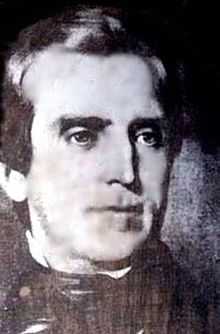
Moncure Robinson (February 2, 1802- November 10, 1891) was an American civil engineer, railroad planner and builder and a railroad and steamboat owner,[1] who is considered one of America's leading Antebellum period civil engineers. He was educated at the College of William and Mary and at the Sorbonne where he studied to be a civil engineer, and his most noted project was the Philadelphia & Reading Railroad.[1]
Unlike many of the engineers of the early nineteenth century, Robinson did not receive his engineering education at West Point. He acquired his engineering education through self-directed study and the observation of engineering projects throughout the United States and Europe. Within nine years of the introduction of the first steam locomotive in the United States, he surveyed, supervised the construction, or was the consulting engineer for 721 miles of track, or one-third the entire railroad track built to that time. At the time of his death in 1891, over 163,000 miles of track spanned the country.[1]
Along with well-known engineers Benjamin Henry Latrobe, II, John Edgar Thomson, and John B. Jervis, Moncure Robinson was in much demand during the late 1820s-40s and after, the transition period from America's Canal Era to the beginning of the Railway Age. By 1850, the basic technical aspects of the American railroad had been solved by this generation of engineers.
Biography
Youth
The Robinson family presence in Virginia dates to 1688 at New Charles Parish.[1] Moncure Robinson was born in Richmond, Virginia as eldest son of John Robinson III (February 13, 1773 – April 26, 1850), judge and clerk of the court in Richmond, and Agnes Conway Moncure (1780 – November 15, 1862). His brothers were Cary, Edwin, Conway (September 15, 1805 – January 30, 1884), Eustace and Moore Robinson, sisters Octavia (1813? – 1880?) and Cornelia.
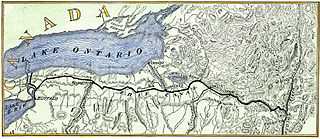
He attended the College of William and Mary from 1815 to 1818. He was a student there until his expulsion in 1818. The College asked Moncure and 21 other students to leave after a dispute involving the charges for a lecture class. He was later exonerated, but never returned to the school and fulfill his father's expectation to follow his example and become an attorney.[1] He then studied drafting in New York, visited the under construction Erie Canal. Fascinated by the canal building that was taking place in Virginia, Robinson applied for a position with the Board of Public Works to survey a route from Richmond to the Ohio River. Denied a job because of his youth, the Board recognized his enthusiasm and allowed Robinson to accompany the surveyors as a volunteer.[1]
Three years later, the Board hired him to assist in locating an extension for the James River Canal. He traveled to New York to view the construction of the Erie Canal. That visit convinced him of the advantages of railroads over canals as a means of transportation and an aid to commerce. He submitted a report to the Virginia Board of Public Works disputing the benefits of the further development of canals, and praising the value of the railroad in its place. The Board did not view the report enthusiastically. He resigned his position and, at that moment, became devoted to the development of railroads.[1]
Robinson further studied civil engineering at the Ecole des Ponts et Chaussees, Sorbonne, in Paris from 1825 to 1827. He toured Europe and studied canal, harbor, bridge and railroad engineering in England, the Netherlands, France and Italy.
Early surveys
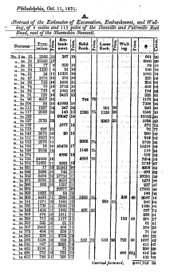
At the age of 16, he joined a survey party running a line of levels from Richmond, Virginia to the Ohio River. He returned to Virginia to work as an engineer's assistant with the James River Company, where he apprenticed on survey work for canals in his native state of Virginia before continuing his education in Europe, where he witnessed and learned from some of the world’s first railroad operations.
In 1829, hired by the state of Pennsylvania's "Main Line of Public Works," he surveyed part of the canal and railroad route from Philadelphia to Pittsburgh. His best known early work was the survey and design of the engineering landmark Allegheny Portage Railroad, the 36 mile combination of ten inclines and level railroad over the Allegheny Mountains, Hollidaysburg to Johnstown, which connected the state's canal on the east side with the state's canal in the Ohio River drainage on the west (the survey included the first railroad tunnel to be built in the United States). Modeled after early British practices, this project was called one of the greatest accomplishments of the Canal Era.
Before that, in 1828-1829, for the state of Pennsylvania he had surveyed parts of the state's anthracite coal regions, the upper Susquehanna River canal system, and the Danville and Pottsville Railroad (D & P) connecting the upper Susquehanna and Schuylkill rivers' canal systems with the coal fields in between. Moncure Robinson was an early advocate of railroads over canals and directed construction of several of the earliest railroads in the country, including parts of the D & P railroad and inclines during the early 1830s. He also surveyed lines in the Mahanoy and Shamokin coal lands of the area, eventually acquiring a part of the lands. He was civil engineer for the Little Schuylkill Railroad, 1830-1831, and for what would become the Catawissa Railroad in the anthracite country (all later part of the Reading). All had inclines and connected to canals—still within the early British tradition of railroads being an adjunct to water/canal transport systems. While building one of the short coal railroads of the anthracite region he served as post master of Port Clinton, Pa, where an early home of his still stands. He led in the effort to influence the carriage of mail by train.
Railroad construction
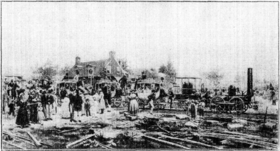
He built the Chesterfield Railroad, a thirteen mile coal road with incline, the first railroad in Virginia completed in 1831. He directed construction of other short lines around Richmond—Petersburg & Roanoke, Richmond & Petersburg, Richmond & Fredericksburg, and Winchester & Potomac—when in 1833, at age 31, he was chosen as chief engineer for a grand railroad project from Richmond through Lynchburg, New River Gorge, and on to the Ohio River (future route of the Chesapeake & Ohio Railroad). lthough he completed a survey the company was unable to raise funds for construction. Robinson returned to Pennsylvania. In 1833-1834, he also surveyed a railroad in the Tamaqua coal fields, directed construction of more of the D & P in the Shamokin Valley, and another coal line near Pottsville.
During 1834-1840, he served as chief engineer of the new Philadelphia and Reading Railroad and directed construction of the line including a spectacular stone bridge and a tunnel 1,932 feet long, considered his crowning achievements. The 93-mile railroad built from the major anthracite coal fields of Pottsville to Reading and then to the port at Philadelphia was the first double track mainline in the United States (after the British model), included three of the nine first railroad tunnels in the United States, and was reportedly the first to use crushed stone ballast. (In 1828-9, Robinson had designed his first railroads—the Allegheny Portage and the Danville & Pottsville railroads—as double track lines, but these included inclines that worked better with two tracks; the Reading was the first main line designed at the outset with double tracks in mind, though with only a 22' wide grade that required widening later). Because of the extensive coal fields it tapped, the Reading would become one of the most profitable railroads in the U. S. It was also considered Moncure Robinson’s first mountain railroad without inclines—a statement about the transition from the Canal Era of feeder coal roads to water transport/canals. The Reading paralleled the Schuylkill River navigation canal, and by the 1840s proved the superiority of the railroad over the turnpikes and canals as the inland transportation system of the nineteenth century.
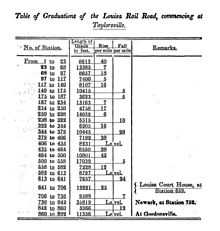
Horses and mules, gravity and stationary steam engines on inclines, were the first motive power on Moncure Robinson’s railroads. Though he held patents on incline systems, from the beginning, he recommended British built locomotives for railroads, especially the recently perfected 0-4-0s with Bury fire box. By the mid-1830s, American mechanics had perfected the 4-2-0, with its lead swivel truck or pilot wheels – designed by John B Jervis for the Mohawk & Hudson – and Robinson recommended these for steeper grade railroads during the late 1830s, in Virginia and Pennsylvania. For the Reading, he ordered British and American made locomotives. For more power, however, he is credited with helping design in 1839 one of the earliest 4-4-0 locomotives, the "Gowan & Marx," named after his London banker. This, the most powerful locomotive up to that time, was built by Eastwick & Harrison of Philadelphia, and proved ideal for the coal fields tapped by the Reading (John White, American Locomotives, correctly credits others for the 4-4-0 design patent; and this is true for the mechanics of the machine, but the concept of replacing the then dominant 4-2-0s with the better tractive 4-4-0s, which would became the major locomotive type for the next thirty years or more, has been shared with Robinson).
In 1840, he declined an offer from the Czar of Russia to direct an ambitious railroad building program, but did serve as consultant to the Czar, the US government, and elsewhere. About this time he broadened his consulting work, providing reports on the proposed New York & Erie Railroad, the New York Harbor improvements, and other projects. In 1839, with Benjamin Latrobe, John Jervis, J Edgar Thomson, Claudius Crozet, Horatio Allen, Henry Campbell, and others he helped organize the American Society of Civil Engineers in Philadelphia; although this organization languished he helped form a new AS of CE in New York in 1852. He was described as “tall and handsome…with cold, gray eyes, an aquiline nose, and a scar on the left side of his face that ran from the corner of his mouth to his ear. Women found him fascinating.” (Dilts, The Great Road, p. 191).
While working on the Reading, he undertook other railroad projects. He built the majestic bridge across the James River between Manchester and Richmond, Virginia for the Richmond and Petersburg Railroad which was completed in 1838. This 19 span bridge was the most impressive Town lattice truss bridge ever built in wood. Because of increased business in Virginia, he left his cousin Wirt Robinson as chief engineer of the Reading. Moncure Robinson became, between 1840 and 1847, one of the early presidents of the Richmond, Fredericksburg and Potomac Railroad and continued his interest in the line afterward (Moncure's brother Edwin was president 1847-1860, and his son John was president 1871-1878). He also continued to advocate for his unfulfilled dream of building a line from Richmond to the Ohio River to compete with the Baltimore and Ohio (Latrobe chief engineer), Pennsylvania (Thomson chief engineer, later president), and the series of lines paralleling the Erie Canal later organized as the New York Central (Jervis chief engineer), all of which built into the Ohio Valley/Midwest in the 1840s-50s.
Manager and financier
Late 1840s Robinson was moving away from a career as civil engineer toward that of manager and financier. After successfully raising funds in England for the Reading railroad in the 1830s, he more and more turned to financing and directing projects, which occupied him for most of the rest of his life. He was an active stockholder and/or director of various rail and water transport companies—the Seaboard & Roanoke railroad, the Delaware & Chesapeake canal, Chester Valley Railroad, Pennsylvania Railroad, Philadelphia, Wilmington & Baltimore Railroad, steamboats on the Chesapeake, and other properties—managing his holdings from his Philadelphia home. He successfully worked with investors to consolidate a series of short-line railroads into what became the Seaboard Air Line railroad and ship system. After the Civil War, his son John Moncure Robinson became superintendent then president of this major, 800 mile southern trunk line, from Norfolk and Richmond, Virginia to Atlanta, Georgia and Birmingham, Alabama. In 1887, at age 85, Moncure Robinson completed his last railroad construction project, the 18 mile Palmetto Railroad in the Carolinas, a link in the Seaboard line from Richmond to Florida.
Family
Sons were John Moncure and Edmund Randolph Robinson. He was married to Charlotte Randolph Taylor (1815 – 1895) on February 2, 1835; she was granddaughter of the nation's first attorney general, part of the old Virginia family of Randolphs. He lived at times in Philadelphia, Pennsylvania, and Richmond, Virginia.
Upon Moncure Robinson's death in 1891 in Philadelphia, eulogists remembered that as a young man he had been one of the new Republic's first railroad civil engineers. In his will of September 11, 1873, he left an endowment for preservation of the Aquia Episcopal Church, Aquia, Virginia (his grandfather was reverend there, and his parents are buried there—the Robinson trust still funds its maintenance). His personal papers[2][3] and the papers of the Robinson family[4] are held by the Special Collections Research Center at the College of William and Mary.
Reception
Robinson left his profession as the leading railroad engineer in the United States, attained an international reputation for engineering excellence and marvelous executive talents, and was frequently consulted during his retirement on various railroad projects. He influenced Frederick List, called the “Father of German Railroads” and Michel Chevalier, the Minister of Public Works under Louis Philippe and the most eminent engineer in France. In 1853, the American Society of Civil Engineers bestowed one of its highest honors on Robinson by electing him an honorary member.[1]
Moncure Robinson is referred to as "one of the most distinguished civil engineers in the United States"[5] and the "genius of America’s earliest railways."[6] He was instrumental in the early development and growth of the country’s great railroad system.[1]
Publications
- Francis William Rawle, Moncure Robinson. Central Rail Road: Reports of the Engineers of the Danville and Pottsville Rail Road Company ; with the Report of the Committee of the Board Thereon, October 15, 1831. Danville and Pottsville Rail Road Company. Clark & Raser, 1831
- Moncure Robinson. Report on the Continuation of the Little Schuylkill Rail Road: From Port Clinton to Reading. J. and W. Kite, printers, 1834
- Moncure Robinson, Jonathan Knight, Benjamin Hall Wright. Report of M. Robinson ... Jonathan Knight ... and Benjamin Wright ... Civil Engineers, upon the plan of the New-York and Erie Rail Road. Scott & Company, 1835
- Moncure Robinson. Report of Moncure Robinson, Esq: Upon the Surveys for the Louisa Rail Road, Volume 38. T.W. White, 1836.
- Moncure Robinson. Obituary Notice of Henry Seybert. 1883
References
- ↑ 1.0 1.1 1.2 1.3 1.4 1.5 1.6 1.7 1.8 Robinson, Moncure (1802-1891) at Swem Library Special Collections, The College of William & Mary Robinson. Accessed February 12, 2014. Licensed under a Creative Commons Attribution-ShareAlike 3.0 Unported License.
- ↑ "Moncure Robinson Papers". Special Collections Research Center, Earl Gregg Swem Library, College of William and Mary. Retrieved 24 January 2011.
- ↑ "George Michener Hart Collection on Moncure Robinson". Special Collections Research Center, Earl Gregg Swem Library, College of William and Mary. Retrieved 24 January 2011.
- ↑ "Robinson Family Papers". Special Collections Research Center, Earl Gregg Swem Library, College of William and Mary. Retrieved 24 January 2011.
- ↑ The Illustrated American. Vol. 9. (1892) p. 107
- ↑ Brown, Revelle Wilson. Moncure Robinson (1802-1891) Genius of America's Earliest Railways. Newcomen Society of England, American Branch, 1949.
Further reading
- Barbara E. Benson (ed.) Benjamin Henry Latrobe and Moncure Robinson: The Engineer as Agent of Technological Transfer. Proceedings Regional Conference in Economic History, Eleutherian Mills, 1974.
- Revelle W. Brown. The Reading Railroad – An Early History. The Newcomen Society of England, American Branch, New York, 1946.
- Revelle W. Brown. Moncure Robinson, Genius of America’s Earliest Railways. The Newcomen Society of England, American Branch, New York, 1949.
- George H. Burgess and Miles C. Kennedy. Centennial History of the Pennsylvania Railroad Company, 1846-1946. Philadelphia: Pennsylvania Railroad, 1949.
- James D. Dilts. The Great Road, the Building of the Baltimore and Ohio, the Nation’s First Railroad, 1828-1853. Stanford, California: Stanford University Press, 1993.
- Richard B Osborne, "Professional Biography of Moncure Robinson," William & Mary Quarterly, 2d Series, vol 1 #4, October 1921.
- Scott Nelson Reynolds. Iron Confederacies: Southern Railways, Klan Violence, and Reconstruction. University of North Carolina Press, 2000.
External links
| Wikimedia Commons has media related to Moncure Robinson. |
- Robinson, Moncure (1802-1891) at Swem Library Special Collections, The College of William & Mary Robinson.
|